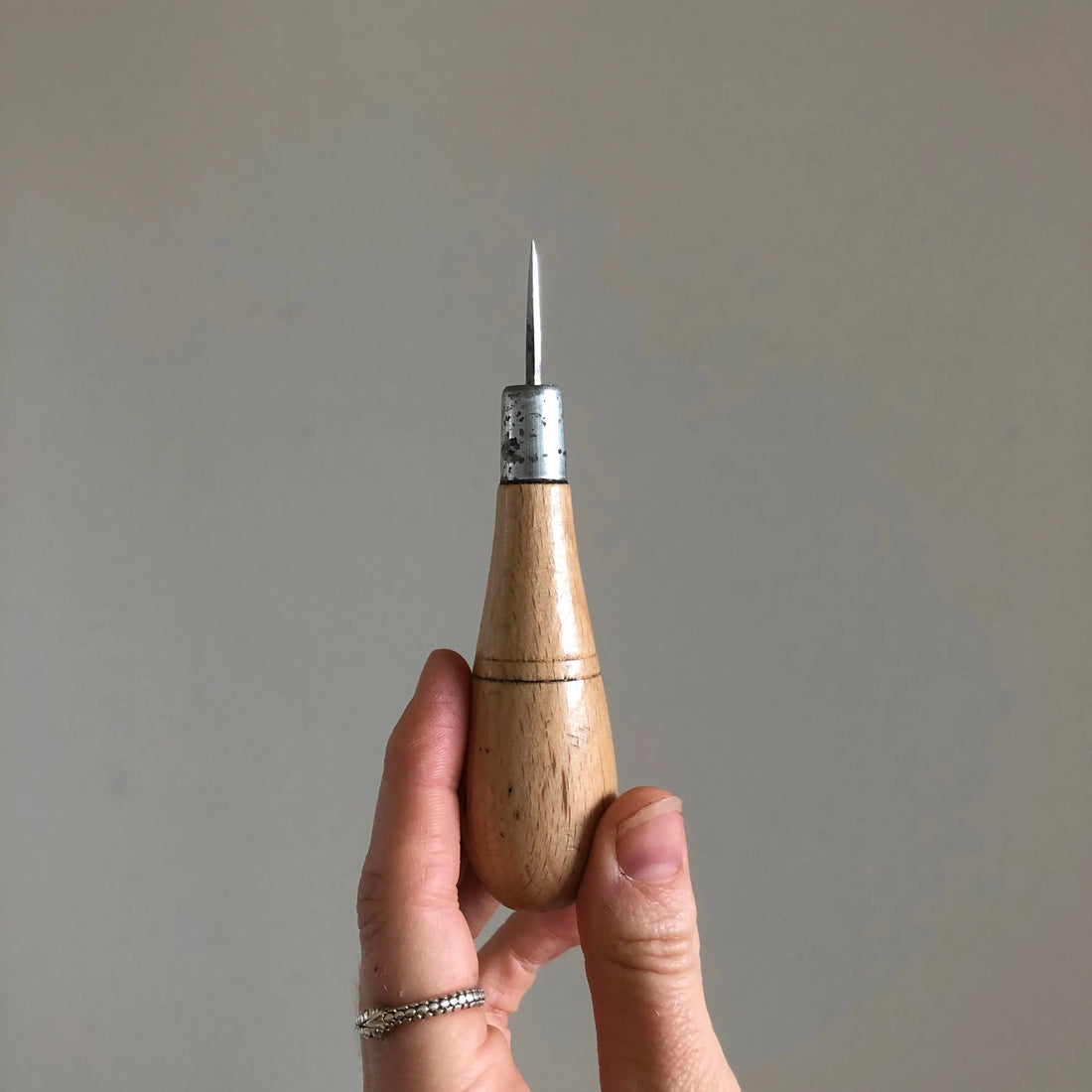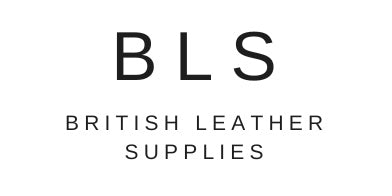
5 Types of Leather Awls Every Artisan Should Know
Share
5 Types of Leather Awls Every Artisan Should Know
When it comes to leathercraft, attention to detail and the right set of tools can transform a simple project into an artisan masterpiece. Among these tools, leather awls hold a place of prominence. Tiny, precise, and unassuming, these indispensable instruments serve a variety of purposes, from marking measurements to making precise stitching holes.
But not all leather awls are created equal. Each type of awl has a specific role in leatherworking, and understanding their uses can significantly enhance your craft. Whether you're a seasoned artisan or a hobbyist just starting your leathercrafting journey, this comprehensive guide will help you master the five essential types of leather awls.
What is a Leather Awl?
Before we jump into the specific types, let's briefly discuss what a leather awl is. A leather awl is a hand tool with a sharp metal point designed for piercing, marking, or pushing holes into leather. While awls may look similar at first glance, their tips, shapes, and intended applications vary widely based on the task at hand.
They are small in size but mighty in impact, helping leather artisans achieve accuracy and precision that distinguishes amateur projects from professional-quality work.
1. Scratch Awl
What is it?
The scratch awl is the jack-of-all-trades in the leathercraft world. With a sharp, pointed tip and a long, thin shaft, it's primarily used for marking outlines or guiding lines into a piece of leather.
Primary Functions:
- Marking cutting lines on leather surfaces
- Aligning measurements
- Creating guide lines before punching or cutting
Best Used For:
Scratch awls are perfect for projects requiring precise layouts, such as wallets or belts. When accuracy and clean patterns are essential, a scratch awl will ensure your design turns out flawless.
Pro Tip: Use a ruler to guide your scratch awl for straight lines. For curved patterns, templates can be great companions.
2. Stitching Awl
What is it?
The stitching awl is a powerhouse tool that makes sewing leather a breeze. Unlike the scratch awl, a stitching awl comes with a needle and sometimes even a spool of waxed thread embedded in its handle, making it ideal for hand-stitching leather.
Primary Functions:
- Punching holes for stitching
- Sewing leather layers together
- Strengthening seams
Best Used For:
Use a stitching awl for projects like bags, saddles, or shoes where multiple layers of leather need secure and durable seams.
Pro Tip: Practice on scrap material first—it takes some skill to maintain evenly spaced stitches, but once mastered, this awl will make your seams look professional.
3. Blunt Awl
What is it?
Unlike the sharp awls, the blunt awl (also known as a creasing awl) isn't about puncturing leather. Instead, its rounded tip makes it safe for marking or embossing while ensuring that your leather remains unharmed.
Primary Functions:
- Marking folds or creases
- Embossing decorative patterns
- Helping with wet molding without puncturing the material
Best Used For:
Blunt awls are essential when working on projects like leather journals, card wallets, or any project requiring creases for bending or folding leather without damage.
Pro Tip: Wet your leather slightly before using a blunt awl for cleaner and more pronounced creases.
4. Diamond-Shaped Awl
What is it?
The diamond awl is the gold standard for creating perfectly aligned stitching holes. Its four-sided, sharp tip creates a slit instead of a round hole, ensuring that stitches lie flat and secure within the leather.
Primary Functions:
- Creating angled stitching slits
- Maintaining stitch alignment
- Helping achieve tight hand-sewn seams with minimal bulk
Best Used For:
Diamond-shaped awls are ideal for projects where aesthetics and stitch quality are a priority, such as luxury handbags or custom leather accessories.
Pro Tip: Hold the awl at a consistent angle while piercing through leather to ensure evenly spaced, professional-looking stitching.
5. Curved Awl
What is it?
A curved awl features a bent or arched tip, making it perfect for working on tight corners and hard-to-reach areas. While it’s not as commonly used as other awls, it’s a lifesaver for specific tasks.
Primary Functions:
- Stitching rounded or confined spaces
- Working on hidden seams
- Piercing areas regular awls can’t reach
Best Used For:
Curved awls shine in projects like rounded bags, saddlery, or any leather item with intricate, hard-to-reach details.
Pro Tip: Apply steady pressure as the curved awl tip may slip if forced too quickly. This ensures clean and precise punctures.
Choosing the Right Awl for Your Project
Selecting the right awl comes down to the nature of your project. Are you working on intricate stitching or a decorative piece? Perhaps you need to mark folds or handle delicate leather. Pairing your project with the right awl not only improves accuracy but also makes the crafting process smoother and more enjoyable.
Quick Reference Guide:
- Scratch Awl: For marking lines and measurements.
- Stitching Awl: For sewing and punching stitching holes.
- Blunt Awl: For creases and embossing without puncturing leather.
- Diamond-Shaped Awl: For precise, flat stitching holes.
- Curved Awl: For stitching in tight or hard-to-reach areas.
Beyond Awls: Elevating Your Craft
While awls are essential, the key to becoming a master leatherworker lies in continuous learning and practice. Experiment with different awls, practice your technique, and don’t shy away from upgrading your skills.
Many online tutorials and leatherworking communities offer valuable insights into using these tools effectively. Take the time to understand how leather behaves and reacts to each awl, and you’ll soon have the confidence to tackle even the most challenging projects.
Where to Find Quality Leather Awls
Investing in high-quality tools like leather awls will elevate your craft. Look for reputable brands and stores specializing in leathercraft tools. Some of our favorite sources include:
- Tandy Leather
- Weaver Leathercraft
- Amazon’s leatherworking section
- Local craft stores
High-quality tools last longer, perform better, and make your crafting experience much more enjoyable.
Take Your Leatherworking to the Next Level
Mastering the five main types of leather awls will unlock endless possibilities for your leathercraft projects. Each awl serves its unique purpose, from marking lines to creating professional-quality stitches, ensuring that your final piece is both functional and beautiful.
If you’re just beginning your leatherworking adventure, start with a scratch awl and stitching awl. Expand your toolkit as your skill grows to include diamond-shaped, blunt, and curved awls for more intricate work.
With the right tools in hand and a bit of practice, you’ll confidently bring your leathercraft visions to life!
